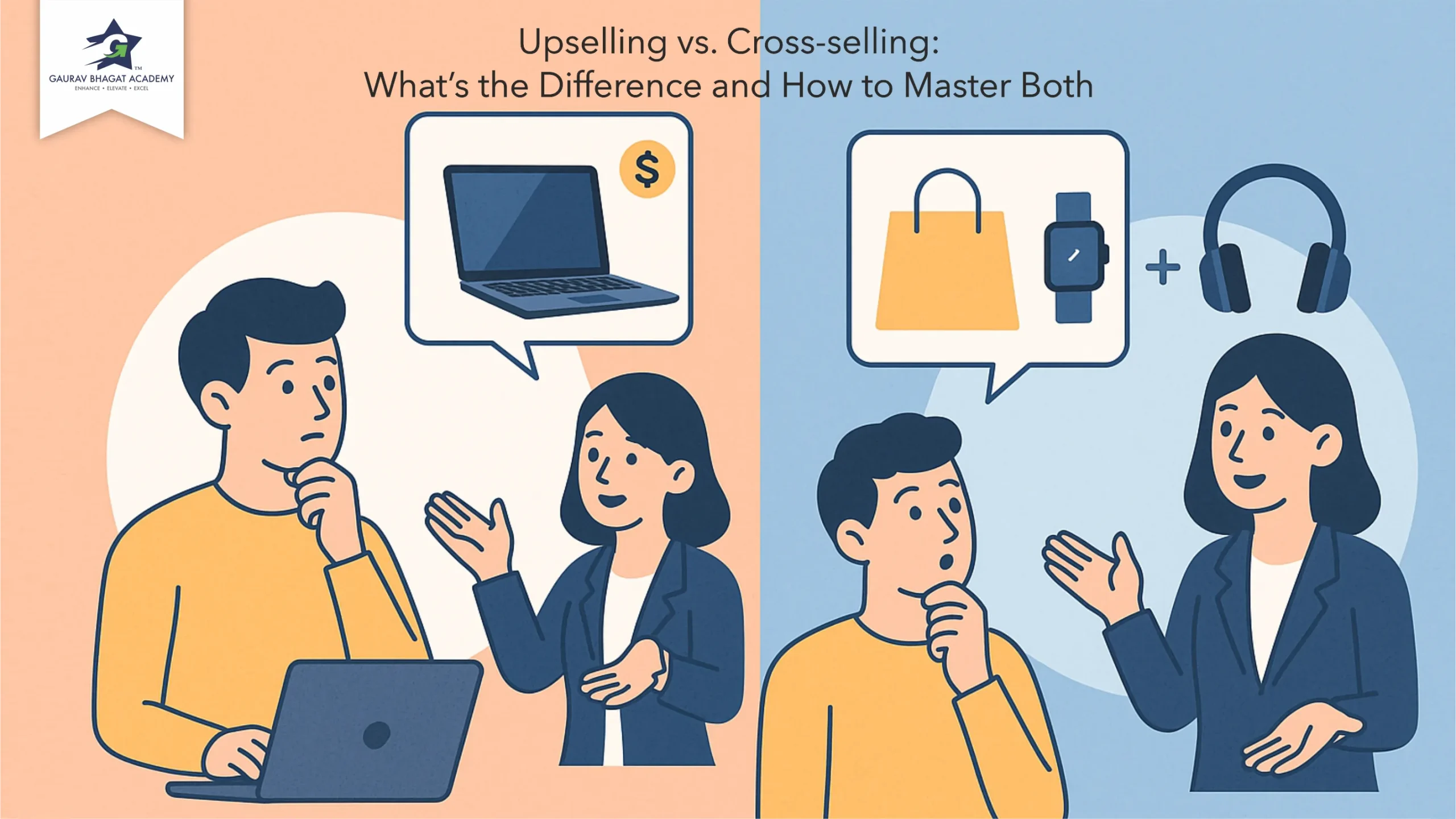Imagine this…
You’re at a coffee shop, and you’re craving a cappuccino.
You order your regular, and the barista smiles and asks,
“Would you like to upgrade to large for an extra ₹30?”
You nod.
And then she says,
“We also have a new almond croissant—it pairs so beautifully with that coffee.”
You smile once more and say, “Why not?”
Boom! You just experienced upselling and cross-selling—and didn’t even complain.
Now, picture this in your business. Every. Single. Day.
Let’s break it down.
What Is Upselling?
Upselling is encouraging the customer to purchase a more advanced version of the product or service they are already looking at.
Example:
If a client is considering your basic sales training program, you suggest the deluxe one with one-on-one coaching and additional resources.
It’s not about selling at a higher price point—it’s about providing more value.
What Is Cross-selling?
Cross-selling is offering an ancillary product or service that enhances the value of the original purchase.
Example:
When a client signs up for your negotiation seminar, you give them a sales script package or an objection-handling mini-course.
It’s the “Would you like fries with that?” approach—but for serious business.
Upselling vs. Cross-selling: What’s the Difference?
| Upselling | Cross-selling | |
| Focus | Upgrade of the same product/service | Complementary product/service |
| Goal | Move the customer to a better version. | Add more value to the current purchase. |
| Timing | During or just before the purchase decision | Often after or alongside a purchase decision |
| Example | “Go for the Pro Plan instead of Basic.” | “Add a coaching call with your plan.” |
Why Mastering Both Is Crucial?
Upselling and cross-selling aren’t about selling more—they’re about selling better.
Increased revenue per customer
Deeper client relationships
Increased customer lifetime value
Establishing yourself as a solutions provider—not merely a seller
And the best part? Your customers thank you when done right.
5 Secrets to Use Upselling and Cross-selling Like a Pro:
1. Know the Customer Journey
Blind-pitching is a don’t. Discover what they need, what problems they’re facing, and what success looks like for them.
2. Give Value, Not Stuff
Don’t sell them an add-on or upgrade if it doesn’t truly benefit them. Buyers can detect insincerity and will smell it from a mile away.
3. Timing is everything.
Show upsell options at decision-making moments. Deliver cross-sell recommendations following a purchase or during onboarding.
4. Keep It Simple
Too many choices = confusion = lost sale. Keep it brief and be confident about what you are offering.
5. Train Your Staff
Success in sales isn’t strategy—it’s skill. Spend money on training, scripts, and roleplays that instill confidence.
(Need some help with that? That’s what we specialise in at Gaurav Bhagat Academy!
Final Thoughts: Sell Smart, Serve Better
Finally, upselling and cross-selling aren’t tricks of the trade—they’re service skills. You’re getting your customers to get more of what they need, whether they know it or not yet.
If you’re determined to increase your sales without being pushy, these two skills are a must-learn.
Ready to level up?
Enroll for sales training at Gaurav Bhagat Academy and master the art of upselling, cross-selling, and closing like a pro.
Your next-level sales adventure begins now.
Read more insights on our blog or contact our team to discover more.





No comment